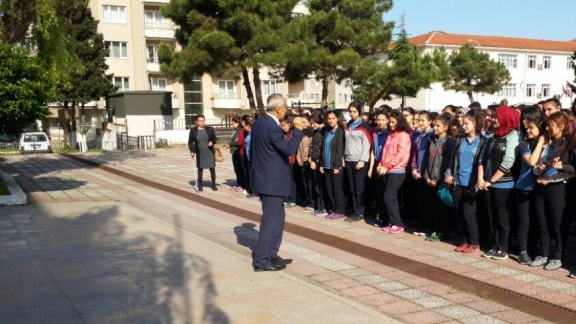
Our school was opened in the 1944-1945 academic year as the Provincial Public Library on the lower floor of the ' Evening Girls Art School ' with the tailoring and designing clothes branches. It continued teaching and training students as the Girls Art School and then the Institute for Girls. In 1978 it moved to the current building and since then it has been continuing its academic activities in the same building.
Our school has 4 departments ;
1.child development and education ,
2.ICT,
3.Fashion and design
4. food and beverage production and service.(catering)
Also there is a kindergarten in our school. There are 40 teachers and 300 students .It is located in the center of Sinop which is on the northern coast of the Black Sea,Turkey.
https://www.youtube.com/watch?v=0GQJzDhdMGM
Our mission is to contribute students to be confident and talented ,to gain positive behaviour and establish positive communication skills. Considering the individual abilities, we aim to provide them to be able to catch up the changing technology ,to get leadership qualities,collaboration and teamwork .Besides the vocational education, we ensure to raise students who can make good communication,use the technology properly and the knowledge and the skills gained in the field ,offer quality services required by the relevant sector,plan to run their own business and have the responsibility of the quality of the products.
Vocational training of young people and adults is an important issue in Turkey as well as in the world. So we need to increase the number of trained labour power and the level of technology to provide high export revenues of the apparel sector and to be competitive.
In the clothing department , our aim is train qualified professional entities in accordance with the required scientific and technological developments. Our students take the culture courses according to the curriculum and vocational courses. The courses include analyzing textile fibers and textiles, technical drawing, measuring the size, preparing model sheet, achieving practical garment patterns, templating , Serialization, cloth spreading, using sewing machines and vending machines..etc.